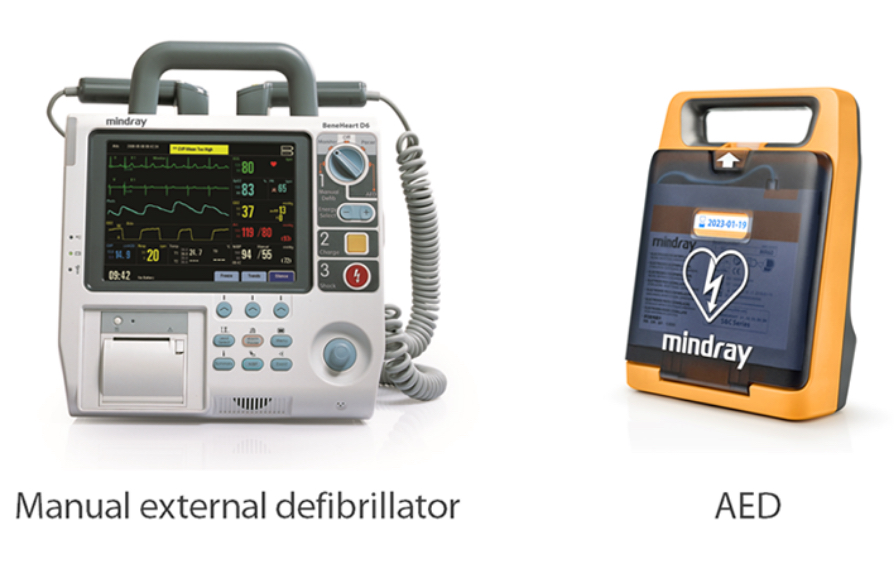What is a defibrillator?
A defibrillator is a medical device used to deliver an electric shock to the heart in an attempt to restore its normal rhythm in cases of life-threatening cardiac arrhythmias, particularly ventricular fibrillation, and pulseless ventricular tachycardia. These arrhythmias can cause the heart to quiver or beat erratically, leading to a sudden cardiac arrest.
Defibrillators work by delivering a controlled electrical shock to the heart, depolarizing the heart muscles and allowing the heart's natural pacemaker to reestablish a normal rhythm. This process is known as defibrillation. It is crucial to perform defibrillation as quickly as possible after a cardiac arrest occurs to increase the chances of survival.
Defibrillators: A history
The evolution of defibrillators has been remarkable:
- 1899: Physiologists from Switzerland demonstrate
an early model; electrical shocks can restore heart rhythm.
- 1933: Hyman Otor developed, delivering shock via chest needle.
- 1930s: William Kouwenhoven creates an external defibrillator, jump-starting hearts.
- 1947: First human test by Kouwenhoven was successful.
- 1950s: USSR's Dr. V. Eskin pioneers closed-chest defibrillation.
- 1958: US senator promotes "reanimation research," leading to improved shock timing.
- 1950s-60s: Portable AEDs developed, expanding accessibility.
- 1980: Implantable AEDs implanted, aiding arrhythmia patients.
This journey spans over 120 years of innovation, saving countless lives.
Types of Defibrillators:
Defibrillators are usually of two types.
- Automated external defibrillators (AEDs)
- Manual external defibrillators
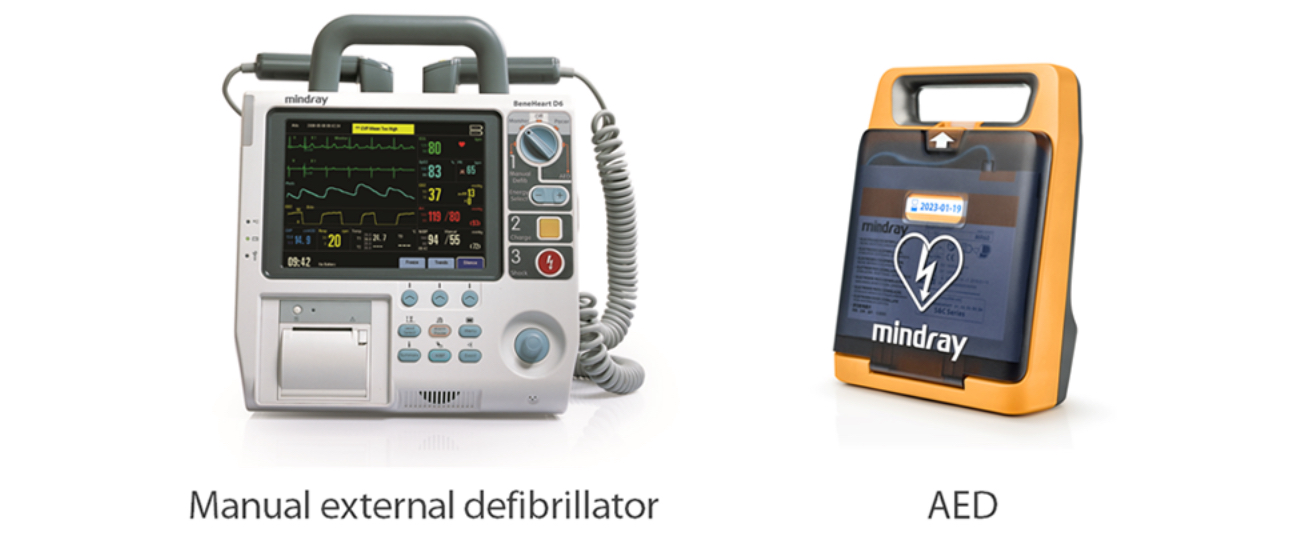
Medical professionals in hospitals and paramedics in ambulances usually make use of manual external defibrillators. As a comparison, automated external defibrillators are mostly placed for public access in public places such as at workplaces, train stations, etc. Both can achieve the same purpose - to cause defibrillation of the heart.
However, the AED is more comfortable and more convenient for people without a medical background to use. Unlike manual external defibrillators, they often come with a pair of
adhesive electrodes as well as a computerized system that analyses the heart rhythm and would tell the appropriate level of electrical shock that needs to pass it.
How does an AED work?
An AED works by analyzing the electrical impulses in a cardiac arrest victim’s heart, judging automatically whether an electric shock should be administered, and administering a shock of the appropriate strength to restart a healthy rhythm
in the victim’s heart.
Fibrillation, a notable symptom of a heart attack, refers to the irregular beating of the heart. The Mindray BeneHeart Series AED is designed to address this irregular heartbeat.
But how exactly does this AED function?
The device achieves its goal by delivering a controlled electrical current, which can be as high as 360 joules in certain AED models, directly to the heart. This process effectively
restores the heartbeat to its normal rhythm.
There's a common misconception that defibrillators can be used when the heart has completely stopped beating. However, this isn't accurate. Once the heart shows flat lines on the ECG (indicating cessation of beating), the person is considered deceased. While AEDs possess remarkable capabilities, the idea that they "restart the heart" is a bit of an exaggeration of their function.
In reality, the device doesn't literally "restart the heart." Instead, it resets the heart's natural pacemaker, which regulates its regular rhythm, thereby reinstating proper heart function.
The electrical energy required for generating the defibrillation shock is generated by a built-in high-capacity battery and capacitor. These components release a powerful pulse of energy, which is directed through two wires featuring electrode pads (defibrillation pads). Notably, these adhesive pads can be quickly and easily applied by anyone at any time. Their adhesive nature eliminates the need to hold the pads in position during usage.
Where to place the pads?
Where you place the pads is quite essential as their correct placement would ensure that the electric current released can circulate all through the patient’s heart.
There are two correct places to place the pad.
- Place one AED pad under the collarbone on the upper-right chest. Place the second AED pad near the left armpit on the patient’s lower ribcage.
- In front and behind the heart (typically for children aged under 8)
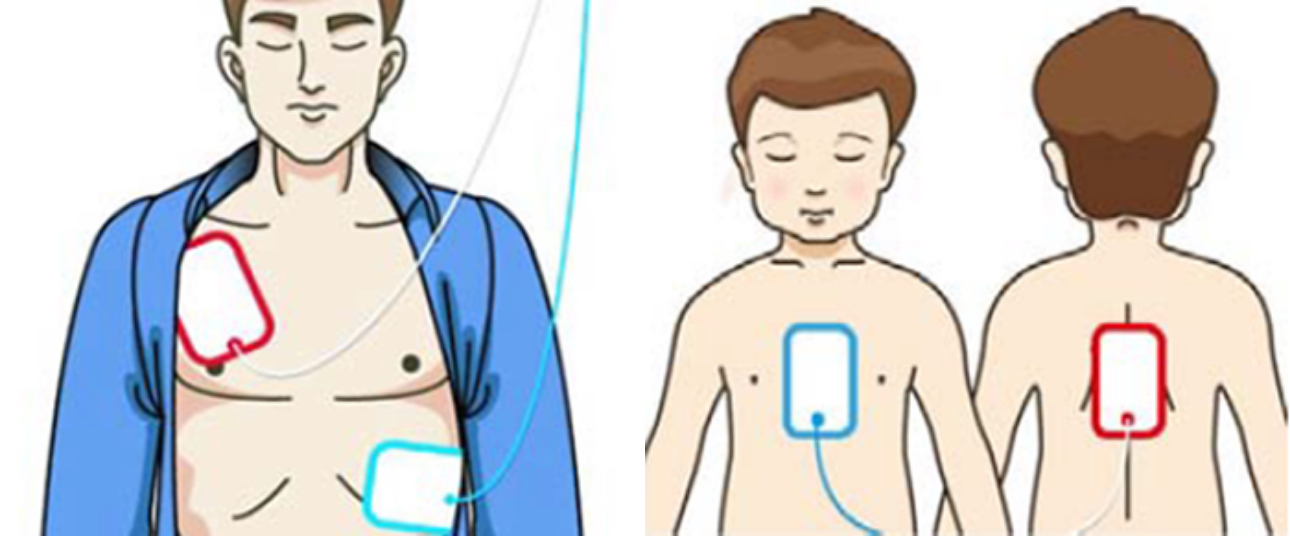
There are quite a good number of AEDs you can purchase for your facility, or even for your personal use at home. People suffering from severe heart diseases can keep one handy in case of emergencies. You may be confused about which to purchase; however, when
buying an AED, you should think of ease of use, effectiveness, and durability, whether it is for public facilities or for home use.
Mindray's automated external defibrillators are designed for user-friendly operation. They include essential accessories and provide all the fundamental features of the standard
AEDs, along with some intelligent enhancements. Let's delve into a more detailed understanding of the functioning of these AEDs.
How to use the AED?
Power on first: The first step is to place it near the patient, then switch it on. The new BeneHeart C Series AED makes it even easier: Once you open the lid, the device automatically powers on in 2 seconds without pressing a power button. BeneHeart C Series knows what a first-time rescuer needs, and provides the smart ResQNaviTM technology to guide you through the tense rescue process step by step with animation coaching and voice prompts.
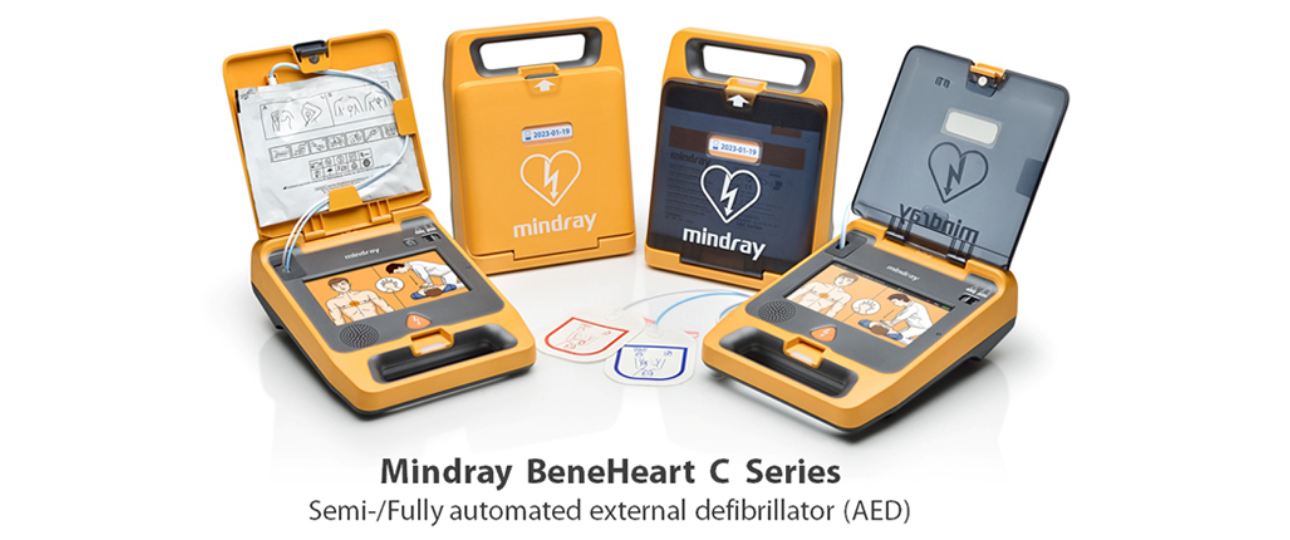
Apply the pads: Remove the patient’s upper
clothing and expose the chest region. It would be best if you wiped off any moisture before you place the pads in the right places, as already indicated above.
The defibrillation success rate drops in seconds. Thanks to the new QShockTM technology
that enables the first shock to be delivered in less than 8 seconds, the BeneHeart C Series is able to increase the chance of successful defibrillation and help rescuers save every second to save lives. The QShockTM technology shortens the ECG analysis time to only 5 seconds with pre-charging completed synchronously so that no extra time is needed for charging.
In an ideal resuscitation situation, there should be two people around. One can perform cardiopulmonary resuscitation (CPR) on the casualty. The other gets the AED ready for use.
Incorporating both can increase the chances of survival. You should not stop the application of the CPR until the AED has been fully set in readiness for use.
Ensure that the victim is apparent then shock: It is crucial to know that no one touches the casualty or their clothing while delivering a shock to the cardiac muscles. This is because the electric current can go through the clothing, causing the other person to get shocked. Thus, the person handling the AED should look around the casualty and ensure that no one is in close contact with the injury. This is the part where he or she loudly says, “clear!” before pushing the shock button.
AED is very useful for saving lives, and the good news is that it is not complicated to operate. You don’t need extensive training before you can use one. Hopefully, this blog will give you insights into how an AED works.
Mindray offers a wide range of tools and accessories which are necessary for the effective and safe use of automated external defibrillators. Our products range from semi-/fully automated AEDs, the AED-Alert remote management system, to AED training tool kits, which all function optimally to help people properly make use of AEDs and manage them to its perfect working condition.
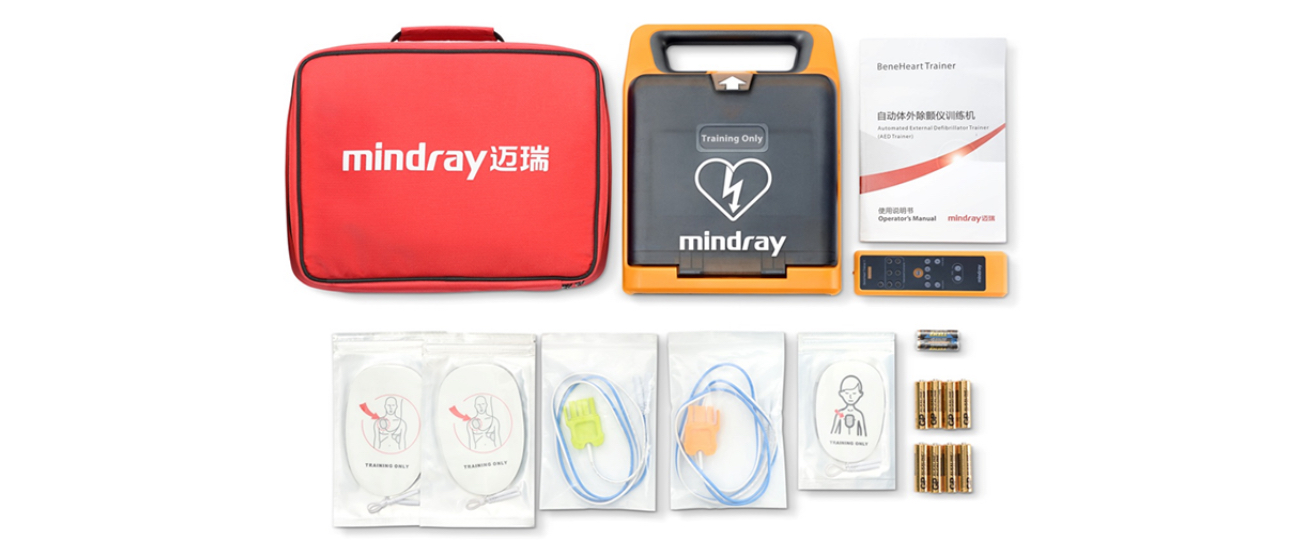
References:
[1] Chris Woodford, 2019. Defibrillators [Online]. Available at: https://www.explainthatstuff.com/defibrillators.html. (Accessed: 20 January 2020)
[2] EMS Safety. AED 101 [Online]. EMS Safety. Available at: https://www.emssafetyservices.com/how-to/aed-101/ (Accessed: 20 January 2020)

